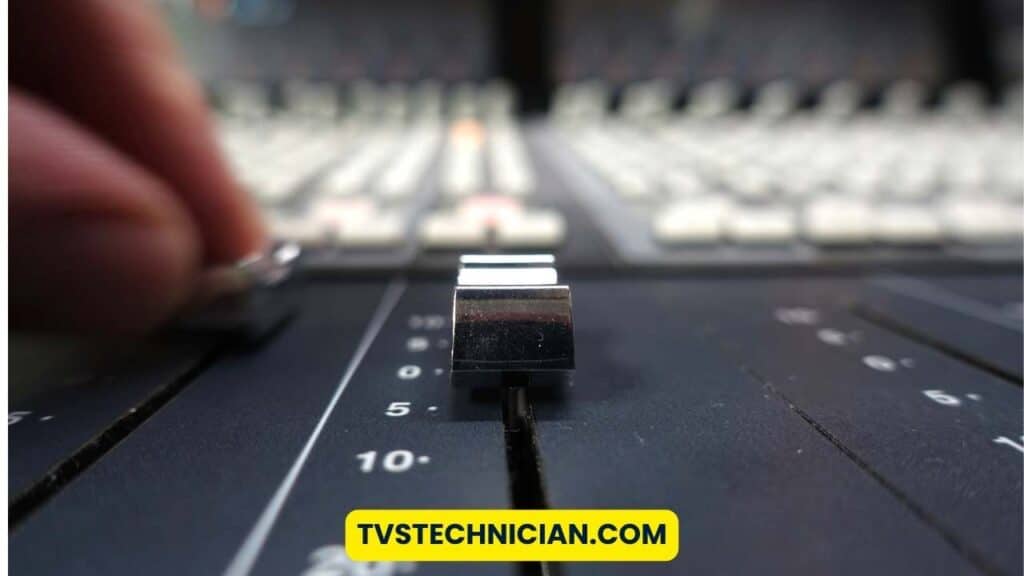Have you ever wondered why the same show sounds different when you switch from your smartphone to your TV? Or why do some movies have booming sound effects but the dialogue is almost a whisper? Well, it turns out it’s not just about the volume. Your Samsung TV’s equalizer settings are the secret to getting that perfect sound.
This easy-to-follow guide will dive into equalizer settings on your Samsung TV. Whether you’re a movie buff, a sports fan, or someone who loves binge-watching series, adjusting the equalizer settings can significantly enhance your viewing experience. Let’s get started!
What Is an Equalizer?
Before we dive into the settings, let’s understand what an equalizer is. In simple terms, an equalizer (EQ) helps you adjust the balance of different frequency sounds. Imagine your favorite song.
The equalizer allows you to turn up the bass, reduce the treble, or find perfect ear balance. The same concept applies to the sound on your Samsung TV.
Finding the Equalizer on Your Samsung TV

To start tweaking, you first need to locate the equalizer settings on your Samsung TV. Typically, you can find them by going to:
- Home > Settings
- Sound > Expert Settings
- Sound Mode > Equalizer
These steps might vary slightly depending on your TV model, but generally, this is where you’ll find the magic buttons.
Unique Equalizer Settings for Optimal Sound
After extensive testing, specific equalizer settings have been identified to significantly improve the sound quality on Samsung TVs. The recommended settings are as follows:
- For 100Hz, a reduction to -10 helps minimize booming bass that can overshadow other frequencies.
- 200Hz is boosted to +5, enhancing the warmth and fullness of the sound.
- 500Hz is slightly increased to +2, aiding in the clarity of lower midrange sounds, such as deeper vocals.
- 1kHz remains neutral at 0, maintaining the balance in the midrange frequencies.
- 2kHz and 5kHz are adjusted slightly to +2 and +5 respectively, which helps enhance vocal clarity and the crispness of higher notes.
- 10kHz is significantly increased to +10, which dramatically improves the brightness and airiness of the sound, bringing out details in music and sound effects.
Accessing Equalizer Settings
Accessing these equalizer settings involves navigating through the TV’s menu system, which might be challenging for some users. The steps include:
- Opening the TV’s Menu with the remote.
- Selecting Settings, then Sound.
- Going to Sound Effects and choosing the Equalizer.
Sound Modes: Amplify vs. Optimized

The article further differentiates between the Amplify and Optimized sound settings. While Amplify enhances bass for a more impactful sound, suitable for genres like rock and hip-hop, the Optimized mode adjusts the audio dynamically for a balanced experience across music, speech, and videos.
Improving Dialogue Clarity
A common issue addressed is the quietness of dialogues, often due to overly dominant bass frequencies.
Users can significantly improve dialogue clarity by lowering the bass or low-frequency response in the equalizer settings, making speech easier to understand.
Basic Equalizer Settings Explained
Samsung TVs usually have various pre-set equalizer options such as Standard, Music, Movie, Clear Voice, and Amplify. Each of these settings is designed to enhance certain types of audio:
- Standard: Keeps the sound balanced at all frequencies. Good for everyday use.
- Music: Enhances the clarity and power of music, making instruments and vocals stand out.
- Movie: Brings out the drama in dialogues and the explosion boom, ideal for a cinematic experience.
- Clear Voice: Focuses on clarifying dialogues, perfect for news or talk shows.
- Amplify: Increases the overall volume, useful for hearing difficulties or very quiet recordings.
Customizing Your Sound Experience
If the pre-set options don’t quite hit the mark, you can customize your audio experience. Here’s how:
- Bass: Want more boom? Turn up the bass. This is great for action movies or any content with many low-end sounds.
- Treble: If the dialogues or high-pitched sounds get lost, increase the treble. This makes the sound crisper.
- Mid-range: Often overlooked, the mid-range balances both the bass and treble. Adjusting this can make a huge difference, especially for vocal clarity.
Tips for the Best Sound Experience
- Room Size Matters: Larger rooms may require a boost in bass, while smaller rooms might benefit from a slight reduction.
- Positioning Your TV: Make sure your TV’s speakers are not obstructed. Even the best settings won’t help if the sound is muffled.
- Consider a Soundbar: For the ultimate sound experience, pair your Samsung TV with a soundbar. This can dramatically improve sound quality, especially in larger rooms.
Don’t Forget to Experiment
The beauty of equalizer settings is that there’s no one-size-fits-all solution. What sounds amazing in one room might not work in another. The best approach is to experiment with different settings until you find the perfect balance for your space and your ears.
Conclusion
Getting the best sound from your Samsung TV isn’t just about cranking up the volume. Adjusting the equalizer settings can enhance your viewing experience, whether watching an action-packed movie, listening to your favorite music, or catching up on the news.
So, take some time to explore the EQ settings on your Samsung TV. You’ll be amazed at how much better everything sounds with a little tweaking.
